We use cookies to make your experience better. To comply with the new e-Privacy directive, we need to ask for your consent to set the cookies. Learn more.
Care Guide: How to Clean LVT Flooring
In this care guide, we'll share tips on how to care for luxury vinyl flooring, prevent scratches and scuffs, and address common issues like water damage. Follow these simple steps to keep your LVT flooring looking great for years to come.
Luxury vinyl tiles (LVT) have become increasingly popular in recent years thanks to their durability, versatility, and resemblance to natural materials. LVT flooring is the perfect choice for any modern home or office, providing warmth, sound insulation and a soft underfoot feel. However, while LVT flooring is relatively low-maintenance, it still requires regular cleaning to keep it looking its best.
In this care guide, we'll share tips on how to care for luxury vinyl flooring, prevent scratches and scuffs, and address common issues like water damage. Follow these simple steps to keep your LVT flooring looking great for years to come.
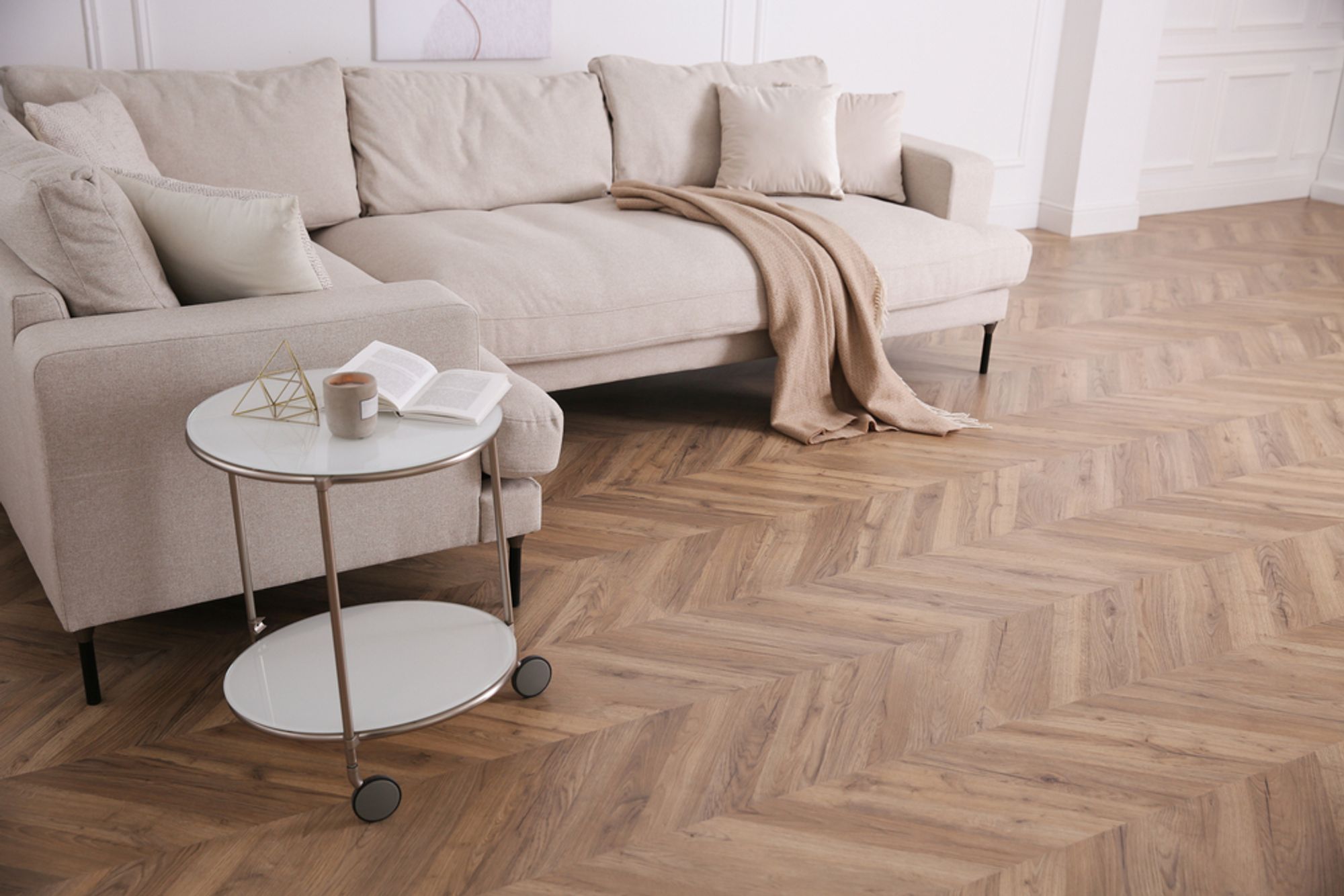

Key Takeaways
- Regular sweeping, damp mopping and choosing the right cleaning products is essential for preserving luxury vinyl tile flooring.
- Furniture pads, rugs/mats, and trimming your pet's nails can help protect LVT from damage.
- Avoid using harsh chemicals and rough cleaning tools on LVT flooring.
- Small scratches and scuffs can usually be repaired.
How to Clean LVT Flooring
Luxury vinyl flooring care starts with establishing a regular cleaning routine. In the following sections, we'll share our best tips for keeping your LVT flooring looking spotless and well-maintained.
Regular Sweeping or Vacuuming
Regularly sweeping your luxury vinyl flooring will help eradicate dirt and debris that could cause scratches and damage. A standard brush attachment on a vacuum cleaner or a soft-bristle broom is recommended for effectively sweeping luxury vinyl flooring if you can, try to sweep or vacuum your flooring at least once a week to maintain a clean surface and protect the floor from dirt and debris.
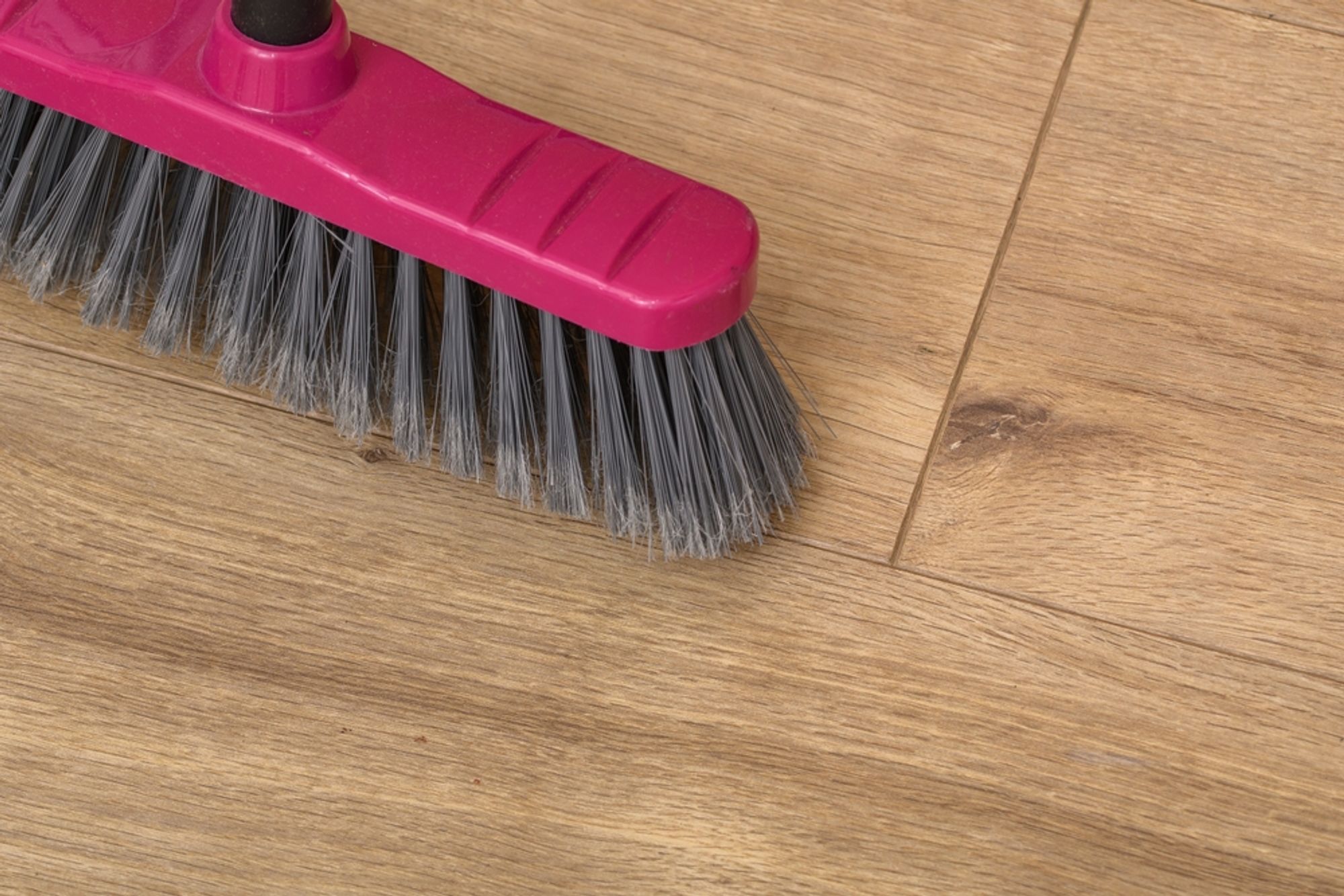

Using a Damp Mop
In addition to regular sweeping, you should also mop your LVT flooring regularly. A damp mop, unlike a wet one, prevents water from seeping into the seams between vinyl planks and potentially damaging or warping the tiles. Here are a few tips for an effective yet gentle mopping process:
- Use a pH-neutral cleaner or a manufacturer-approved cleaning solution.
- Dilute the cleaner with water to avoid using too much product
- Mop in the direction of the grain/texture of your vinyl flooring.
- Avoid soaking the mop head in water. Wring it out before you start mopping.
- Rinse the mop head frequently and replace the cleaning solution if it becomes dirty or murky.
Avoiding Harsh Chemicals and Cleaning Tools
Harsh chemicals and abrasive materials can cause damage to your luxury vinyl flooring. Avoid using products like bleach, ammonia, and other abrasive cleaners that could dull the finish or strip away protective layers when cleaning LVT flooring.
Using mild cleaning solutions and steering clear of harsh chemicals helps to keep your floor in great condition without causing damage or discolouration, maintaining the aesthetic appeal over the years. For a professional finish, LVT floor cleaner solutions are available on the market which are specifically designed for use with luxury vinyl flooring.
You should also be mindful of the types of cleaning tools you use on your floors - scrubbers with stiff bristles can also scratch and damage the surface. Instead, the best way to clean luxury vinyl is to stick to soft-bristle brushes or mops.
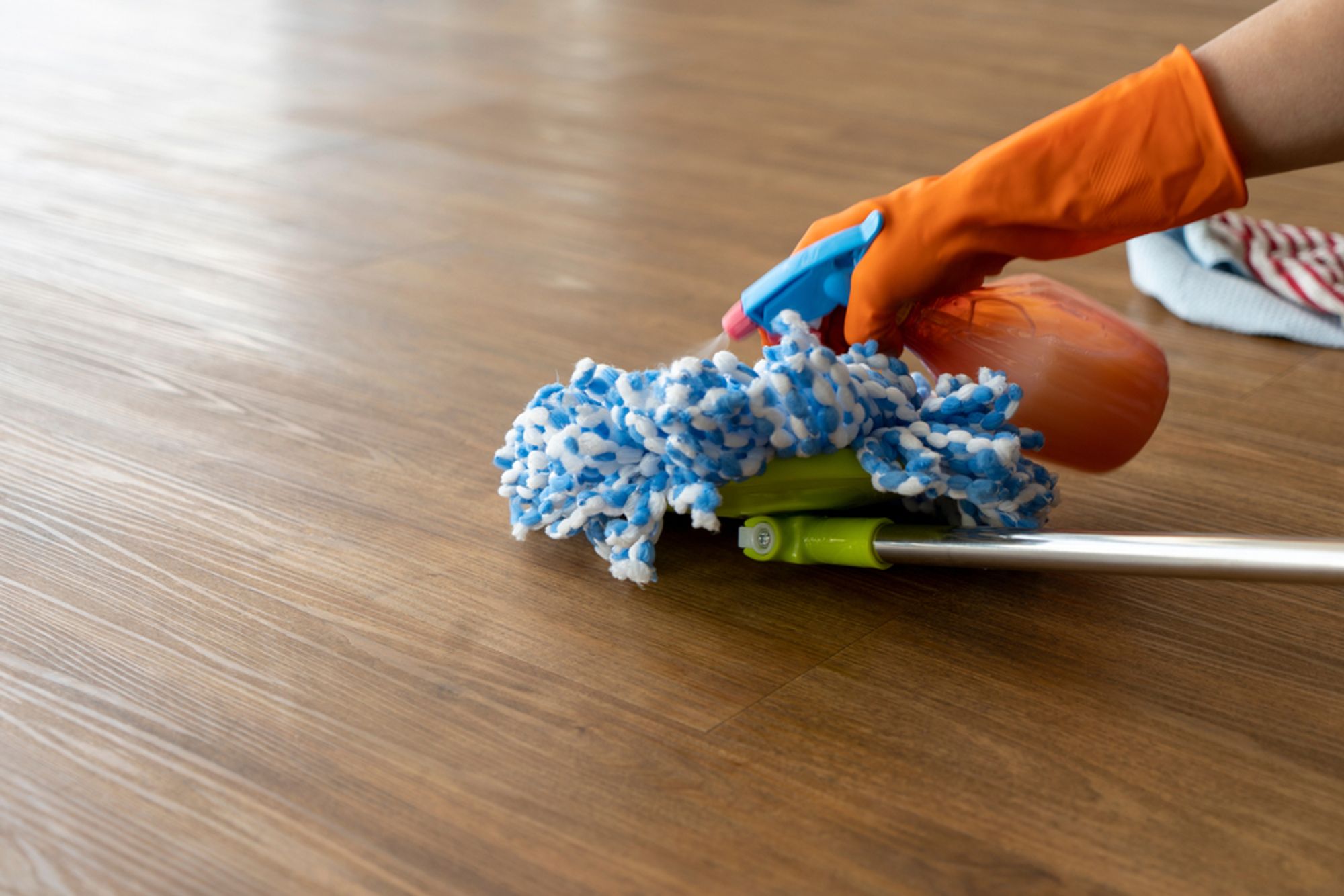

Spot Cleaning Spills and Stains
A swift response to spills and stains is integral to preserving the beauty of your LVT floor. Be sure to wipe up spills immediately with a cloth or paper towel, followed by a gentle cleaning solution. Avoid letting liquids sit on the flooring for extended periods, as it can cause warping and discolouration. For tougher stains, consult the manufacturer's recommended cleaning solution before attempting to remove them.
Deep Cleaning your LVT Flooring
Deep cleaning your LVT flooring is a great way to remove stubborn build-up and maintain its shine. Here's a simple step-by-step guide:
- Sweep or Vacuum: Start by removing loose dirt and dust from the floor with a soft broom or vacuum cleaner.
- Prepare Your Cleaning Solution: You can use a commercially available LVT cleaner or make a homemade solution of warm water and a mild cleaner.
- Mop the Floor: Using a damp mop (not soaking wet), clean the floor with the cleaning solution. Work in small sections to ensure that each area gets thoroughly cleaned.
- Dry the Floor: Wipe the floor dry with a clean, soft towel or cloth to prevent water spots and streaks. This also helps to prevent water from seeping into the seams of the tiles.
- Spot Clean: If there are any stubborn stains or spots, apply a small amount of LVT cleaner directly to the area and gently scrub with a damp cloth until the stain lifts.
- Polish (Optional): Some people use a polish designed for vinyl floors to restore shine and protect the surface. If you decide to do this, make sure to follow the manufacturer's instructions carefully.
Remember, always avoid using abrasive cleaners or tools, as they can scratch and damage the surface of your LVT flooring. The best cleaning products for LVT flooring are those specifically made for this type of flooring, as they are designed to effectively clean without causing damage.
How to Prevent Scratches and Scuffs on Luxury Vinyl Tiles
There are some effective strategies you can adopt to safeguard your beautiful flooring from day-to-day wear and tear.
Using Furniture Pads
Furniture pads are an excellent solution for protecting your luxury vinyl flooring from scratches caused by heavy furniture and appliances. Karndean recommends felt pads for luxury vinyl tiles, as they are effective in protecting LVT floors from scratches and damage.
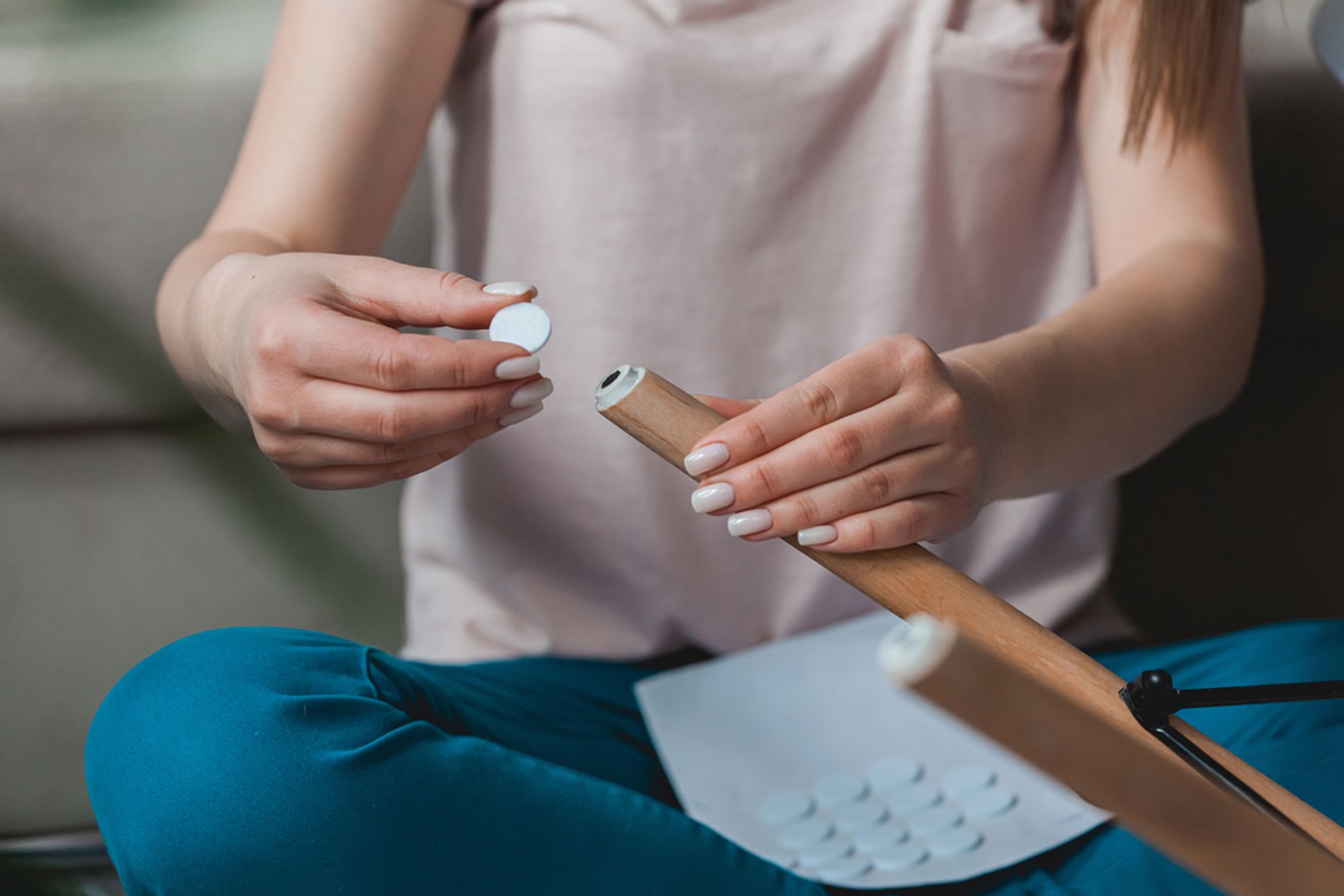

Laying Rugs or Mats
Using rugs or mats in high-traffic areas can help prevent scuffs and scratches on your luxury vinyl flooring. These can include areas such as entrances, hallways, and under furniture. Rugs and mats can also help protect against dirt and moisture, which can cause damage to your floors over time.
Top Tip: avoid using rubber-backed mats, as these can cause discolouration on the floor's surface.
Keeping Pet Nails Trimmed
For pet owners, keeping your pet’s nails trimmed is important in preventing scratches on your luxury vinyl flooring. Pet nails can cause scratch marks on the surface of the flooring, particularly if they are not maintained regularly.
Trimming your pet’s nails at least once every 2-4 weeks is recommended to prevent any damage to your LVT flooring. Keeping your pet’s nails well-maintained protects your flooring and keeps your pet’s paws healthy.
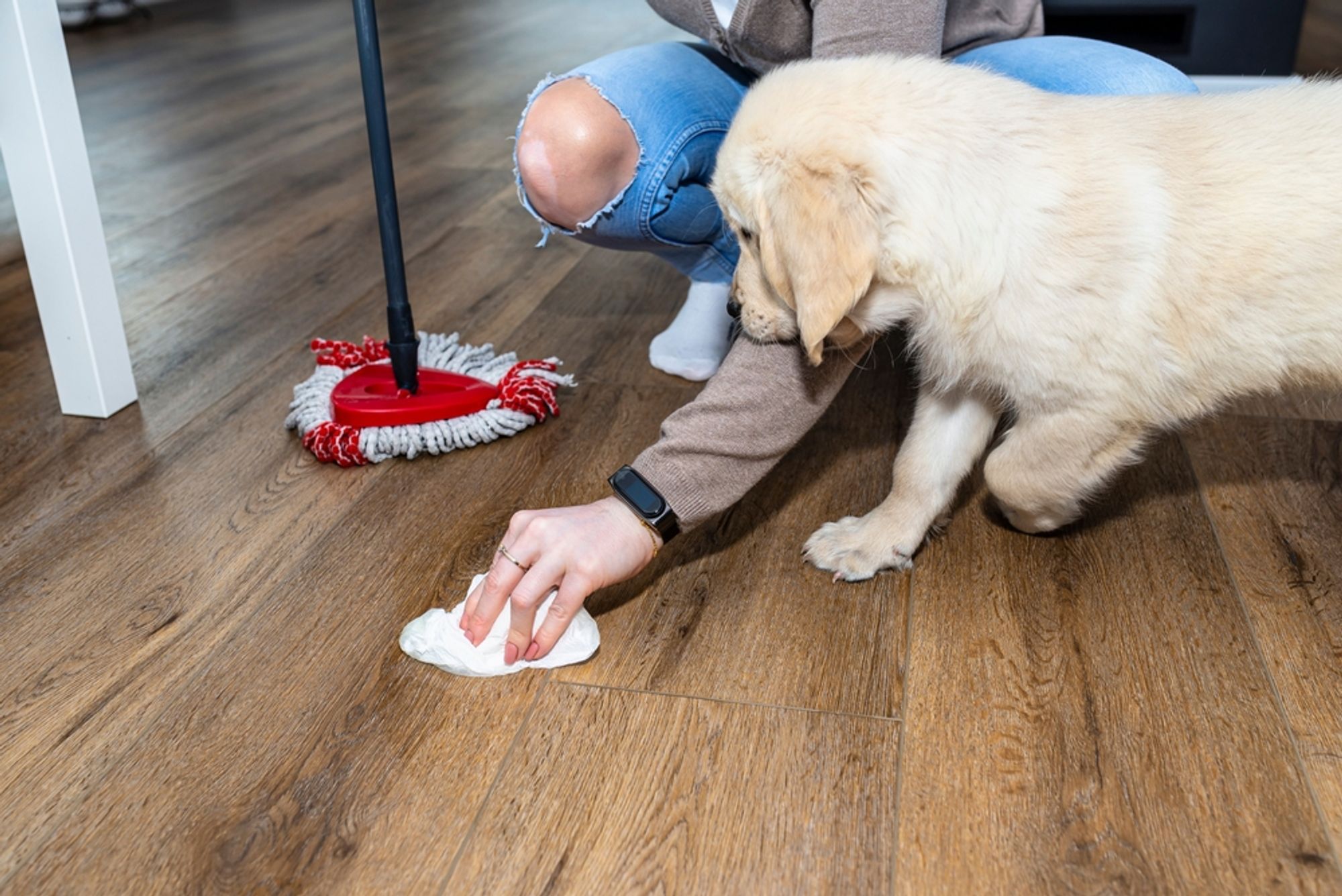

Addressing Water Damage and Common Issues with LVT
Sometimes, despite our best efforts, accidents can happen. If your luxury vinyl flooring experiences water damage, scratches or scuffs, don't worry - there are ways to address these issues and keep your flooring looking great.
Handling Water Damage
Water damage on luxury vinyl flooring can manifest as shifting or movement of the planks, buckling or bubbling, and a deterioration of the overall aesthetic. If water seeps under your LVT, it could also lead to problems like mould and mildew.
If you notice any water damage on your flooring, the first step is to identify and stop the source of water. Next, dry the affected area thoroughly using a towel or mop. If necessary, use a dehumidifier to speed up the drying process.
Once the floor is completely dry, check if there are any visible damages, such as gaps between planks or buckling. If there are, it may be necessary to replace the affected planks or call a professional for assistance.
Remember, while LVT itself is waterproof, this doesn't mean it's immune to water damage. It's always best to clean up spills promptly and maintain your floors properly to prevent damage.
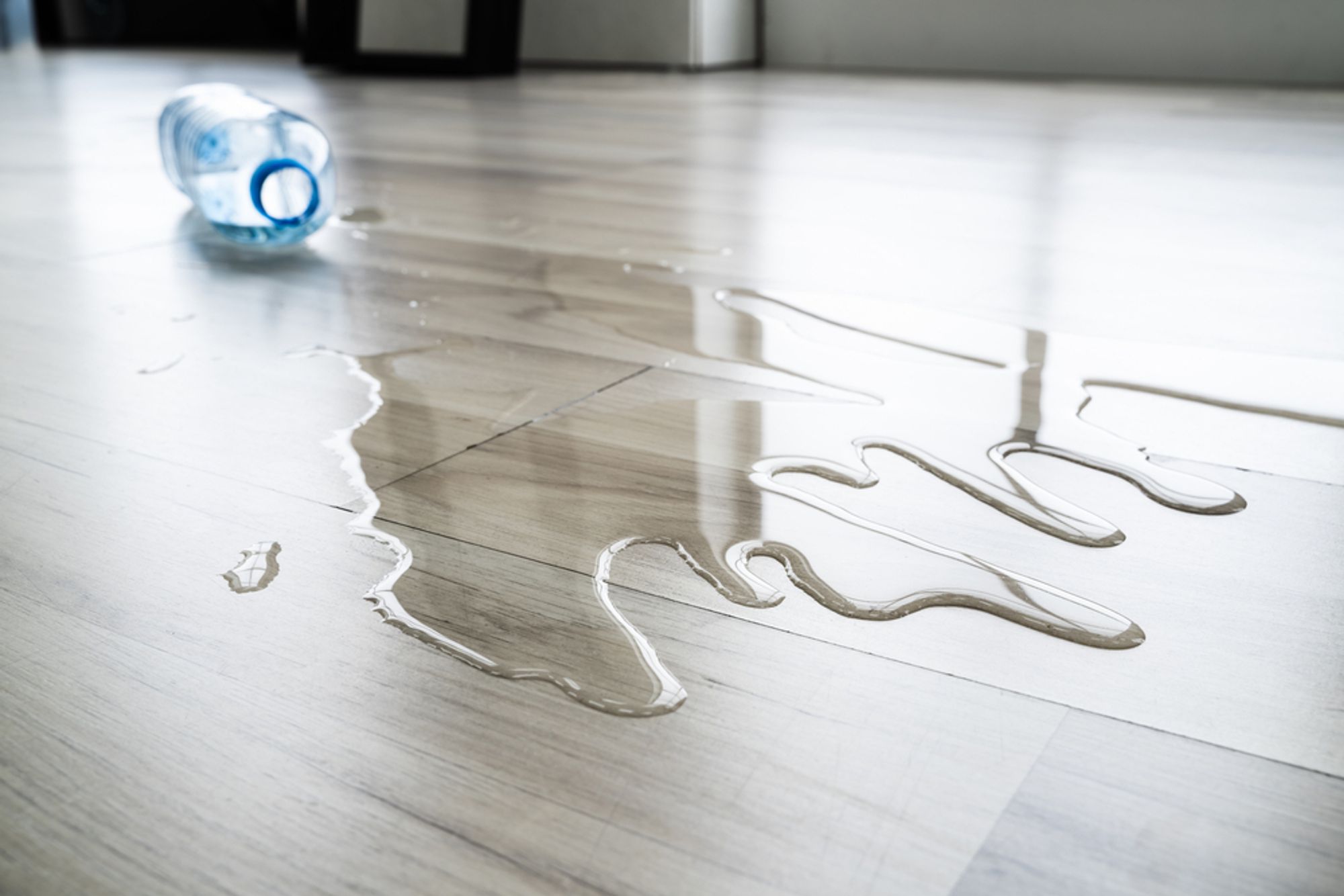

Tackling Tough Stains
Luxury vinyl flooring can be susceptible to a variety of tough stains, such as ink, paints, lipsticks, grease, oil, and other stubborn stains. If left for too long, these stains can become harder to remove, so addressing them as soon as possible is essential.
To tackle tough stains, use a non-abrasive cleaner and gently scrub the affected area with a soft cloth or sponge. Be careful not to use harsh chemicals, abrasive cleaners, or tools like steel wool on your luxury vinyl flooring, as they can damage the surface.
Baking soda or vinegar mixed with warm water can also be effective in removing stains. If the stain persists, try using a specialised vinyl floor cleaner or contact the manufacturer for recommendations.
Repairing Scratches
Scratches on luxury vinyl flooring can occur due to dirt or debris being ground into the surface, sharp objects or heavy furniture being dragged across the floor. Luckily, most minor scratches can be easily repaired, and there are still options for restoration for deeper scratches.
For minor scratches, you can use a scratch repair kit specifically designed for luxury vinyl flooring. These kits typically include a touch-up pen or marker and a clear coat to seal the repaired area.
If you have deeper scratches or gouges, replacing the affected plank(s) may be necessary. This process is relatively simple and can often be done without professional assistance.
Key Takeaways: Caring for Your Luxury Vinyl Flooring
Taking good care of your luxury vinyl flooring can significantly prolong its lifespan and keep its appearance appealing. Here are some key takeaways to remember:
- Regular sweeping and light mopping with a gentle cleaner can help maintain the cleanliness of your luxury vinyl flooring.
- To prevent scratches, use doormats at entryways, felt protectors under furniture legs, and avoid dragging heavy objects across the floor.
- Address spills and stains immediately to prevent damage to your flooring.
- For deeper scratches or damage, consult with the manufacturer for repair options.
By following these tips and properly caring for your luxury vinyl flooring, you can ensure that it remains a beautiful and durable addition to your home for years to come. If you’re looking for options to get started, discover the best cleaning products for LVT flooring.
Frequently Asked Questions (FAQs)
What Should You Not Use on a Luxury Vinyl Floor?
Avoid using harsh chemicals, such as bleach or ammonia-based cleaners, on your luxury vinyl flooring. These can cause discolouration and damage to the finish of your flooring.
Can You Steam Mop Luxury Vinyl Flooring?
It is not recommended to use steam cleaners on luxury vinyl flooring. The high heat and moisture from steam can cause damage to the flooring's surface and adhesive. Stick to gentle cleaning methods, such as sweeping and mopping with a mild cleaner.
What Is the Best Way to Maintain Luxury Vinyl Plank?
Maintaining luxury vinyl plank flooring involves sweeping and mopping regularly, using mild non-abrasive cleaners, quickly cleaning up spills, and applying felt pads to furniture legs.
How Do You Protect Luxury Vinyl Flooring?
To protect your luxury vinyl flooring, use doormats at entryways, felt pads under furniture legs, and avoid dragging heavy objects across the floor. Additionally, immediately address spills and stains to prevent damage to the flooring.
How Often Should You Clean Luxury Vinyl Flooring?
It is recommended to clean luxury vinyl plank flooring at least once a week or as needed. The frequency of cleaning may vary depending on foot traffic and the level of dirt and debris present.





